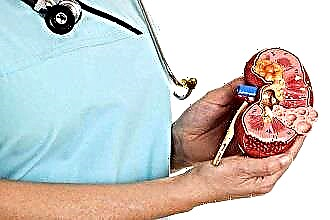The anatomical position of the lymph nodes narrows the search for causes in the differential diagnosis. Along with soreness, size, consistency, systemic connection of the glands, localization is the most important sign for determining the cause of inflammation of the lymph nodes behind the ears. For example, jugular localization in the area of the auricle suggests pharyngitis and rubella in the patient. And the manifestation of local infections, bacterial infection in the sinuses of the nose, throat and oral cavity explains why the lymph nodes behind the ears swell and become inflamed.
How the lymphatic system works and why inflammation occurs
 As part of the immune system, the lymphatic system transports immune cells, and also regulates the removal of tissue breakdown products and toxins from the lesion. This system works without a central pump, so lymph circulates slowly through it. Unlike the circulatory system, the lymphatic system is not closed - it includes trunks and ducts, nodes, capillaries, vessels through which infection can spread along with the lymph flow. In this regard, the physiological proximity of the lymph group to the lesion becomes an additional factor that increases the risk of inflammation.
As part of the immune system, the lymphatic system transports immune cells, and also regulates the removal of tissue breakdown products and toxins from the lesion. This system works without a central pump, so lymph circulates slowly through it. Unlike the circulatory system, the lymphatic system is not closed - it includes trunks and ducts, nodes, capillaries, vessels through which infection can spread along with the lymph flow. In this regard, the physiological proximity of the lymph group to the lesion becomes an additional factor that increases the risk of inflammation.
Cervical, occipital, antero-aural, supraclavicular nodes are included in one group, which provides protection of the head and neck from tumors and infections. The inflammatory process suggests that a pathology has arisen in the "service" zone, which is "assigned" to the lymph group. Therefore, an increase in the node most often indicates a disease of an organ close to it. From what (from which organ) the lymph nodes behind the ears become inflamed, is determined by the totality of the symptoms of the primary disease and the reaction of the lymphatic system.
The most common causes of lymphatic pathology in the behind-the-ear region
A condition that is manifested by an increase in the lymph nodes of the lymphatic system is called lymphadenopathy. The term is used as a working and temporary diagnosis, which is specified after the complete picture of the disease is clarified. Of the six hundred lymph nodes in the body of an adult, only inguinal, axillary and submandibular are normally detected by palpation. Parotids increase relatively rarely, even when pathologies occur. However, if this does happen, the reasons why the lymph node behind the ear has become inflamed may have the character of immune, infectious and tumor pathologies (in 1% of cases of lymphadenopathy, malignant formations are later detected).
 Among the most common causes are bacterial infections: cat scratch disease, tularemia, boils, carbuncles. Less common are viral (measles, hepatitis), fungal infections, as well as drug reactions that cause lymphadenopathy syndrome.
Among the most common causes are bacterial infections: cat scratch disease, tularemia, boils, carbuncles. Less common are viral (measles, hepatitis), fungal infections, as well as drug reactions that cause lymphadenopathy syndrome.
Lymphadenitis
Lymphadenitis as a specific or nonspecific lesion of the lymph nodes often becomes a consequence of a number of primary inflammations. Microorganisms and / or their toxins from the focus are transported by the lymph flow into the regional networks. However, by the time the patient begins to develop signs of lymphadenitis, the focus sometimes has time to be eliminated, which complicates the recognition of the primary zone of infection.
Less commonly, an infection through damaged skin immediately enters the lymph and spreads through the network.
The defeat of the cervical, parotid, submandibular, axillary conglomerates is most typical in lymphodenitis. The development of the disease can become the starting point in the spread of purulent processes - sepsis and adenophlegmon. In turn, lymphadenitis itself can be the result of various pathologies:
- Nonspecific lymphadenitis, the causative agents of which are streptococci, staphylococci, can be the result of boils, carbuncles, panaritium, erysipelas, phlegmon, thrombophlebitis, osteomyelitis, caries, purulent wounds.
- Specific lymphadenitis is a consequence of tularemia, tuberculosis, gonorrhea, syphilis, actinomycosis, anthrax, etc. and the pathological activity of their pathogens.
Tularemia
It is an acute bacterial infection that manifests itself in several forms (depending on the type of infection):
- bubonic,
- ulcerative bubonic,
- angina-bubonic,
- oculobubonic,
- abdominal,
- pulmonary,
- generalized.
An increase in lymph nodes behind the ear is characteristic of the anginal-bubonic form.
The infection enters the body (and the lymph system) through the mucous membrane of the pharynx along with contaminated products. It is accompanied by a sore throat and difficulty swallowing, the tonsils adhered to the surrounding tissue swell and enlarge, on the surface of which a grayish necrotic plaque appears.
If the bacteria enters through the skin, the bubonic form occurs. With this shape, some lymph nodes can reach the size of a hen's egg with clearly defined contours. The pain that occurs at first gradually subsides.
Tularemia bacillus - the causative agent of the disease - in unfavorable conditions (in an environment with temperatures up to 30C) survives for about 20 days, and in favorable conditions (at zero temperature in grain or straw) - up to six months. A person becomes infected through contact with an infected animal or through food with which this animal has been in contact.
Boils and carbuncles
 Serous-purulent lymphadenitis can occur when the lymphatic vessels are involved in the process of spreading infection from a carbuncle or boil. With inflammation of the hair follicles, an extensive necrotic focus appears in the skin, which can affect both the lymph system and the blood system. An attempt to squeeze out a boil or self-medicate with Vishnevsky's ointment leads to inflammation of the behind-the-ear nodes. The ointment should be applied at the granulation stage - after the process of resolving the purulent capsule, and untimely use of the agent often leads to the spread of the inflammatory process.
Serous-purulent lymphadenitis can occur when the lymphatic vessels are involved in the process of spreading infection from a carbuncle or boil. With inflammation of the hair follicles, an extensive necrotic focus appears in the skin, which can affect both the lymph system and the blood system. An attempt to squeeze out a boil or self-medicate with Vishnevsky's ointment leads to inflammation of the behind-the-ear nodes. The ointment should be applied at the granulation stage - after the process of resolving the purulent capsule, and untimely use of the agent often leads to the spread of the inflammatory process.
Measles
The catarrhal period of measles is characterized by cervical and parotid lymphadenitis. Along with this symptom, dry cough, fever with high fever, intense headache, insomnia occur. In the first days, conjunctivitis appears with severe edema of the eyelids, purulent discharge and photophobia, purulent-mucous rhinorrhea. The incubation period for measles lasts about 1-2 weeks and lengthens up to a month in case of administration of immunoglobulin.
Measles is also easily recognized by the Filatov-Koplik-Velsky spots characteristic of this disease, which appear on the mucous membrane of the cheeks along with the second wave of temperature, "rolling" after a short-term decline on the 3-5th day of illness.
Rubella
Lymphadenitis is one of the signs of rubella, which manifests itself in the initial period of the disease in both children and adults. Mostly the occipital and mid-cervical lymph zones are affected, but rubella can also cause inflammation of the lymph nodes behind the ear. Such formations are painful to the touch and may remain enlarged for 2-3 weeks.
In addition, the symptoms of incipient rubella include fever, weakness, headaches, and malaise. In parallel with this, mild runny nose, perspiration, dry cough, photophobia and lacrimation are often recorded. On examination during the first three days, irritation of the conjunctiva, slight hyperemia of the pharynx, as well as the posterior pharyngeal wall, may be detected. According to various estimates, in 80-90% of cases on the first day of illness, skin rashes begin on the face, under the hair, on the neck and behind the ears, which are preceded by itching. During the day, a spotty, small rash spreads throughout the body, excluding the palms and soles.
Pharyngitis
 Soreness of the upper cervical lymph groups with pharyngitis does not occur in all patients, but it can also be a manifestation of this disease. In acute form, pharyngitis occurs when the upper respiratory tract is infected and rarely occurs in isolation. In children under 2 years of age, the inflammatory process often spreads to the nasal cavity, as a result of which breathing is impaired. The temperature can rise to 38-39C.
Soreness of the upper cervical lymph groups with pharyngitis does not occur in all patients, but it can also be a manifestation of this disease. In acute form, pharyngitis occurs when the upper respiratory tract is infected and rarely occurs in isolation. In children under 2 years of age, the inflammatory process often spreads to the nasal cavity, as a result of which breathing is impaired. The temperature can rise to 38-39C.
Adult patients complain of sore throat, accompanied by mild pain when swallowing. This pain increases with an "empty throat", which is not associated with swallowing food. When the pathological process spreads (in particular, to the tubopharyngeal rollers), the pain can radiate to the ears.
Cat scratch disease
When bitten or scratches inflicted by infected cats with lesions in the neck and face of a person, an acute infectious disease occurs with the pathogen Bartonella bacilliformis. The cat itself does not get sick.
For this disease, an increase in regional lymph nodes (cervical, parotid, elbow, axillary) for 15-30 days is the most characteristic symptom.
The nodes can reach the size of a nut, are painful and not welded to the surrounding tissues. The manifestation of inflammation begins with the formation of a small ulcer at the site of the scratch. Then there are symptoms of general intoxication, often with an increase in the spleen and liver.
However, with an increase in the size of the spleen and damage to a group of lymph nodes (usually supraclavicular, mandibular, rarely parotid), lymphogranulomatosis (LGM) also occurs - malignant hyperplasia with the formation of polymorphic cell granulomas.



